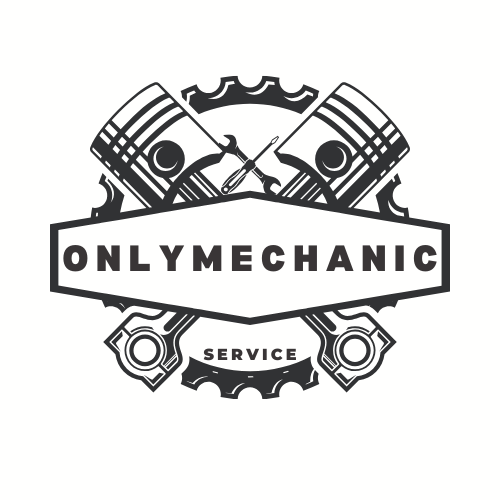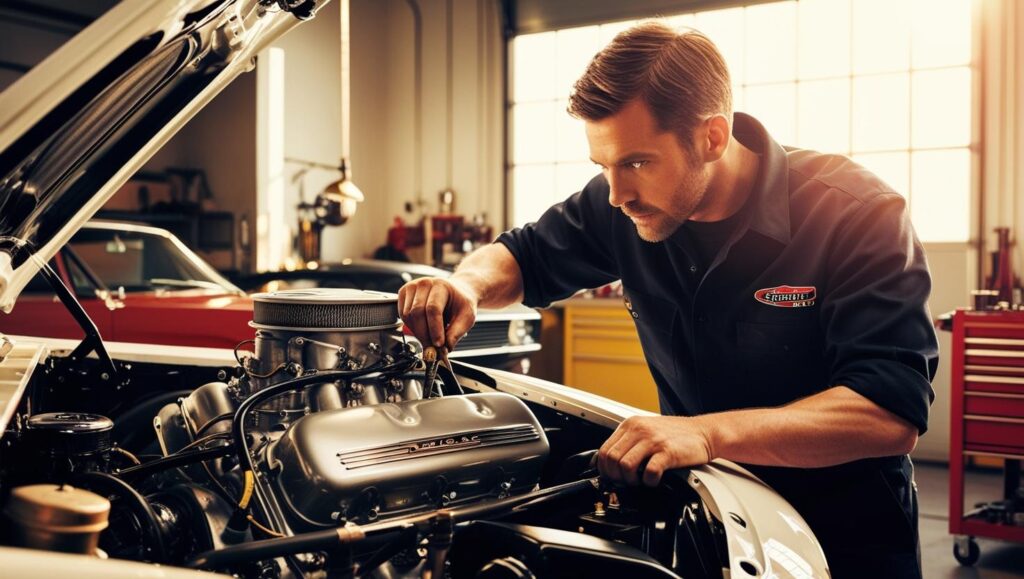Introduction — Why the Challenger Still Matters
There are cars that move you and cars that make you feel alive. The Dodge Challenger belongs to the second category. It’s a modern interpretation of a muscle-age icon, built around the premise that brute force, vocal exhaust, and simple mechanical joy still matter. For many enthusiasts the Challenger isn’t just transportation—it’s a statement. From a mechanic’s perspective, it’s rare to find a platform that so openly invites hands-on upgrades and celebrates the visceral mechanics of a gasoline V8.

Design & Packaging — Big, Bold, Functional
Exterior: The Challenger wears retro cues with confidence: a long hood, flat roofline, and squat, aggressive rear. Unlike its more sculpted rivals, the Challenger’s slab-sided design gives it a period-correct presence. It’s massive by modern coupe standards, which is both a visual plus and a handling compromise.
Interior: The cabin is spacious—legroom and trunk space are better than many sports cousins. The driving position is comfortable for long hauls, and controls are logically laid out. Uconnect remains intuitive and quick, but material quality is a mixed bag: pleasing in some places, cheap plastic in others. For drivers who prize comfort and usability over high-gloss luxury, the Challenger’s interior is honest and practical.
Practicality: Big trunk, usable rear seats for short adults or kids, and straightforward ergonomics make it far easier to live with than the Camaro or some low-slung sports cars. It’s large, but that size translates to real-world convenience.
Powertrains — From 5.7 Hemi to Demon Madness
5.7L Hemi (R/T):
- What it is: The baseline V8. Robust, torquey, and relatively simple.
- Numbers: Around 375 hp and 410 lb-ft (depending on tune).
- Mechanic’s note: Durable and easy to work on. Good balance of power and reliability, predictable aftermarket options, and a satisfying exhaust timbre. Great for daily drivers who want V8 character without hellcat-level maintenance.
6.4L/392 Hemi (Scat Pack):
- What it is: The pragmatic enthusiast’s pick.
- Numbers: Roughly 485 hp and 475 lb-ft.
- Mechanic’s note: This engine breathes better, revs more willingly, and gives a much broader usable powerband. From a workshop standpoint, the 6.4 is forgiving and responds well to bolt-on mods like intakes, headers, and tuning.
6.2L Supercharged Hemi (Hellcat) & Demon 170:
- What they are: Factory-built ballistic missiles. Hellcats start at 707 hp and climb; the Demon 170 eclipses 1,000 hp on E85.
- Mechanic’s note: These engines are engineering marvels but demand respect. Expect higher maintenance, specialized fuel needs (especially for Demon 170/E85), upgraded cooling systems, and attention to drivetrain components (clutch, transmission cooling, rear axle, brakes). If you’re planning to push a Hellcat hard, budget for stronger driveline parts and frequent servicing.
Transmissions:
- Overview: The Challenger has been available with both manual and automatic transmissions in various trims, but modern automatics (8-speed) are where most buyers land. Automatics are stout and quick-shifting; manuals are rarer and offer purity for die-hards. From a mechanic’s angle, automatics on heavy, high-power variants benefit from extra cooling and conservative driving to extend lifespan.
Chassis, Ride & Handling — A Heavyweight with Character
Weight & Dynamics: The Challenger is heavier than typical sports cars. That mass gives it highway stability and a comfortable ride, but it dilutes handling agility. It’s not the car you pick for tight, technical tracks—unless heavily modified.
Steering & Feel: The steering is weighty and predictable but lacks razor-sharp feedback. That’s not bad; it’s appropriate to the car’s mission: long, straight-line confidence and a composed highway demeanor.
Suspension: Factory setups balance comfort and control. Performance packages (adaptive dampers, better anti-roll bars) tighten things up. For owners who want better cornering, coil-overs, sway bar upgrades, and better tires make huge returns for the dollar.
Brakes: Stock brakes on base models are adequate. High-power variants require stronger stopping power—big rotors, multi-piston calipers, and upgraded pads are common upgrades. Track use without cooling improvements leads to fade.
Sound & Emotional Impact — The V8 Experience
If you measure cars by emotional ROI, the Challenger pays dividends. The exhaust isn’t background—it’s the headline act. Whether the throat of a 5.7, the fuller voice of a 6.4, or the feral scream of a Hellcat, sound is an ownership feature. Active exhaust systems are more than gimmicks; they transform the car’s personality on command.
Reliability, Known Issues & Maintenance Realities
Reliability: Overall, Challengers are solid. V8 internals are proven; maintenance intervals are standard. However, high-output models bring higher wear items.
Common items to watch:
- Hemi tick: Often a valvetrain/rocker issue—sometimes harmless but should be diagnosed.
- Brake and tire wear: Especially on Hellcat/Scat Pack due to power and weight.
- Cooling & oil systems: Heavy use (drag launches, track days) stresses cooling and oil systems; upgrades are prudent.
- Fuel system for high-boost cars: Hellcat and Demon owners should monitor pumps and injectors more closely, particularly with ethanol blends.
Ownership Costs & Insurance
Expect above-average fuel consumption, especially in V8 trims. Insurance is higher on powerful models, especially Hellcats and Demons. Maintenance costs climb with performance — upgraded tires, brakes, and drivetrain parts are not cheap. From a mechanic’s perspective, plan for a realistic maintenance budget if you intend to drive enthusiastically.
Tuning & Aftermarket — A Mechanic’s Playground
This is where the Challenger shines. The platform has endless aftermarket support: intakes, exhausts, tuners, supercharger upgrades, suspension kits, brake big-brake kits, axles, and wheel/tire combinations. Simple bolt-ons and a tune on a 5.7/6.4 can transform the car’s personality. Hellcats respond dramatically to pulley swaps and fuel system upgrades but require careful supporting modifications and tuning expertise.
DIY-friendly? Yes. Many upgrades are straightforward for experienced home mechanics, and parts availability is excellent.
Safety & Modern Tech
Modern Challengers incorporate driver aids—adaptive cruise, blind-spot monitoring, backup cameras—but they’re not aimed at autonomy or tech-showmanship. The focus remains on driving sensation. Structural rigidity is good; safety tech is competent but not cutting-edge compared to the latest EVs packed with sensor arrays.
The Challenger vs. The Modern World (EVs & Sports Cars)
The Challenger is an anachronism: loud, heavy, mechanically simple at heart. Against modern turbo sports cars and EVs, it loses on lap times and efficiency, but it wins on soul. EVs deliver instant torque but lack the layered mechanical soundtrack and sensory experience of a V8. If your definition of driving joy includes visceral feedback, manual controls, and the ritual of oil and spark and mechanical four-stroke music — the Challenger remains unmatched.
Who Should Buy One? Who Shouldn’t?
Buy one if:
- You crave V8 sound and character.
- You enjoy DIY modification and want a platform with huge aftermarket support.
- You want a comfortable grand-tourer that can embarrass faster cars in a straight line.
- You value tradition and mechanical honesty.
Don’t buy one if:
- You want the most efficient daily driver.
- You prefer nimble, razor-sharp cornering as a primary goal.
- You need the latest in semi-autonomous driving tech.
Final Verdict — A Mechanic’s Closing Thoughts
The Dodge Challenger is a rare modern car that unapologetically prioritizes emotion over efficiency and sound over numbers. Mechanically robust, easy to work on for the motivated owner, and wildly tunable, it remains a top pick for anyone who values driving as an act, not just transit. It has flaws—weight, plastic bits in the cabin, and higher operating costs—but those are trade-offs many enthusiasts embrace happily.
If you want a car that still feels like a mechanical instrument—one where throttle timing, exhaust tone, and tire smoke are part of the language—then the Challenger speaks fluent muscle. It’s not the best car by every metric, but it’s one of the most honest.


